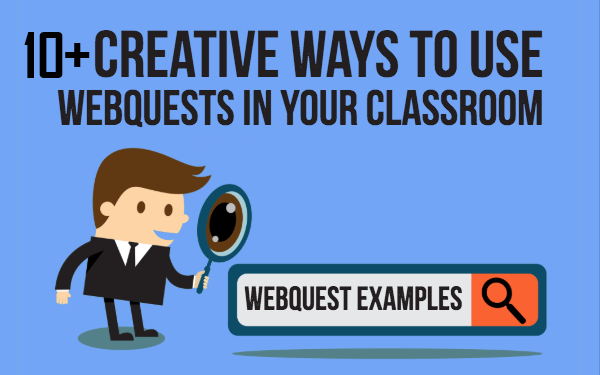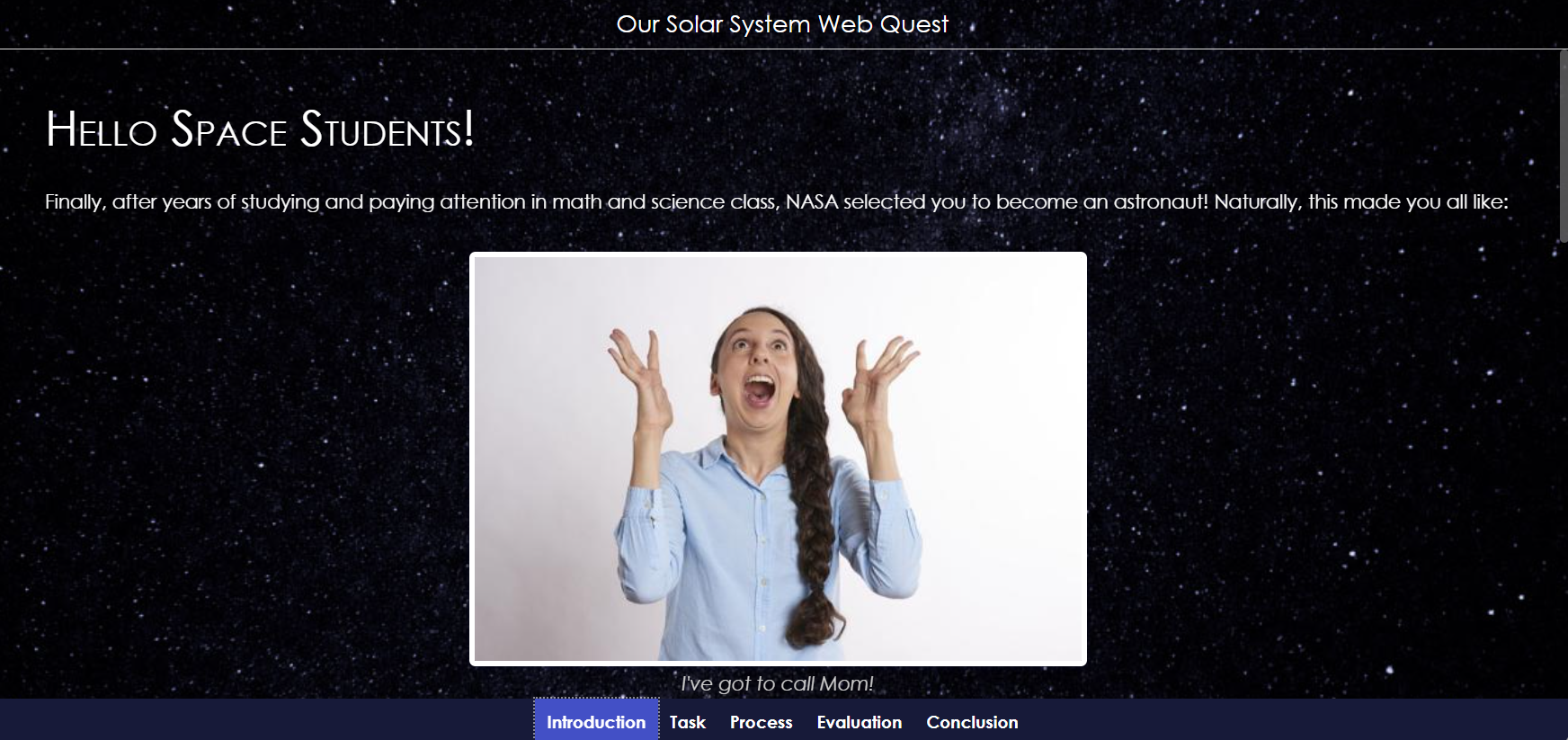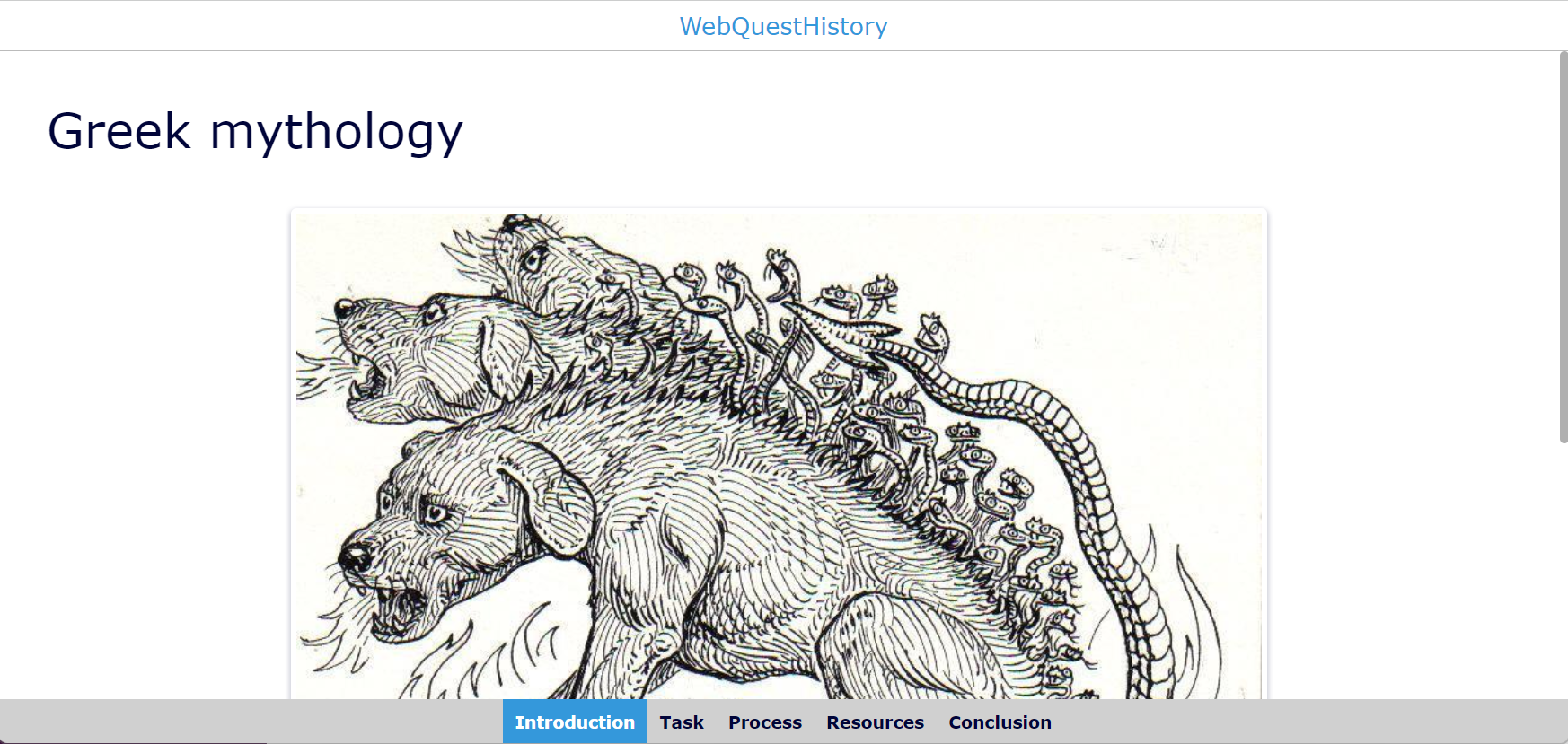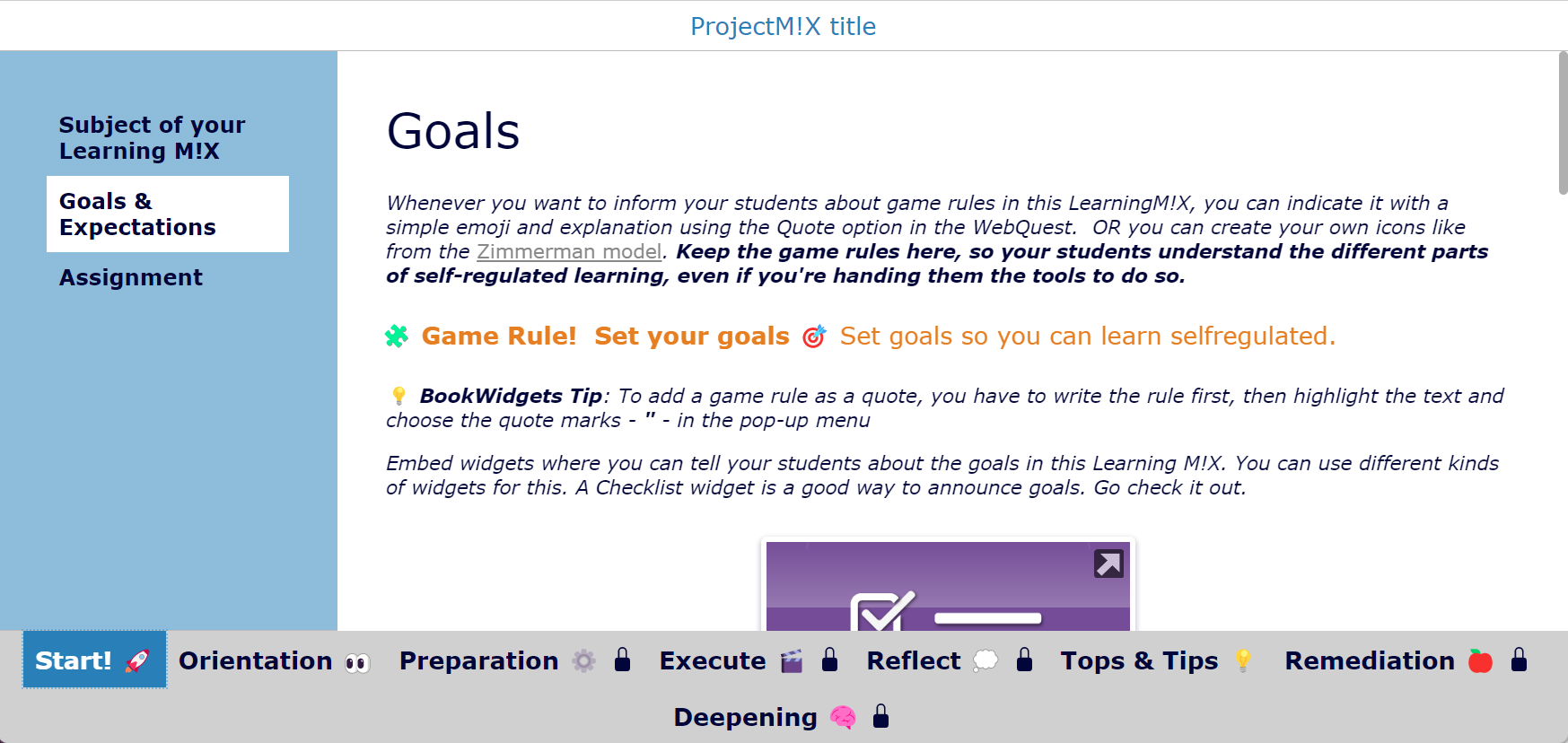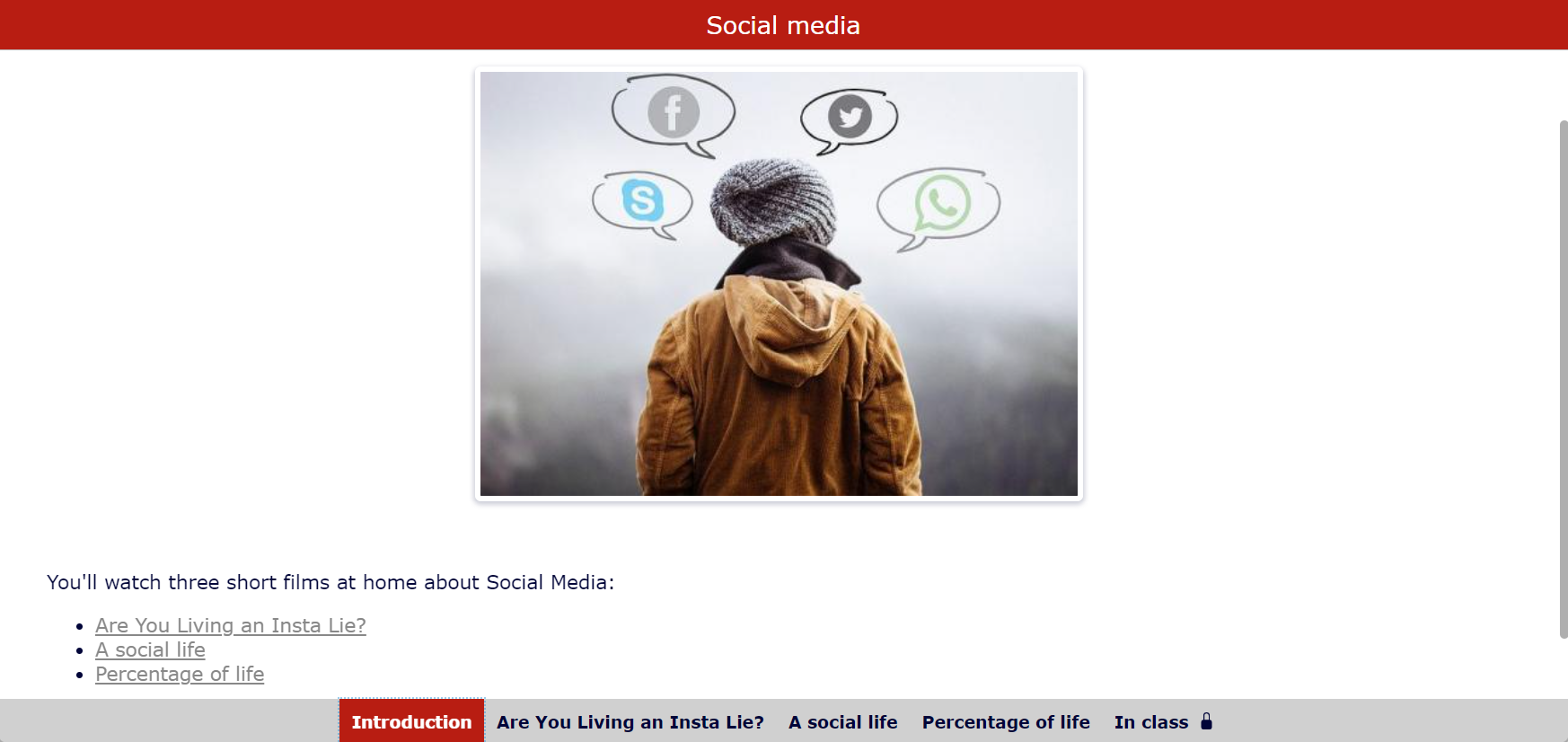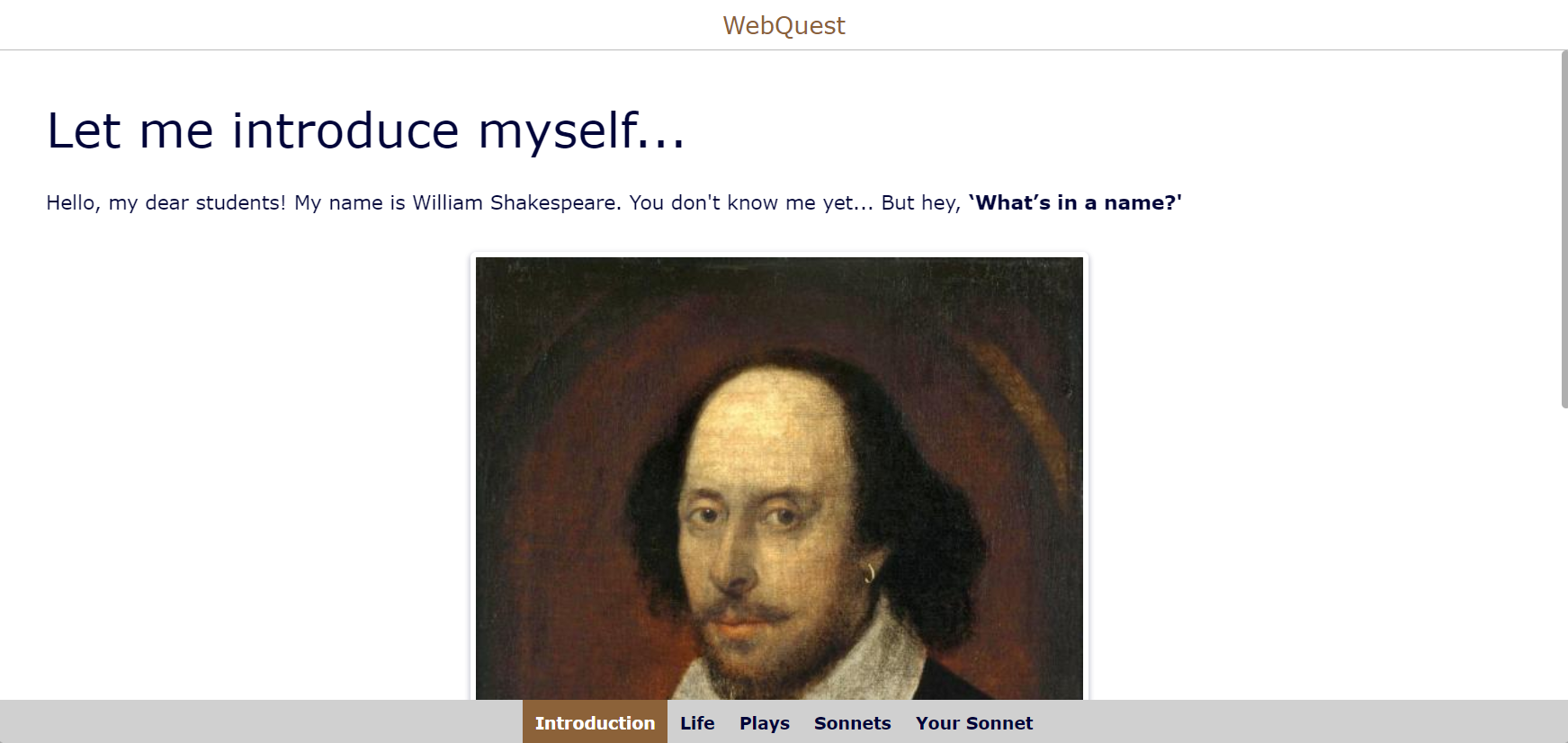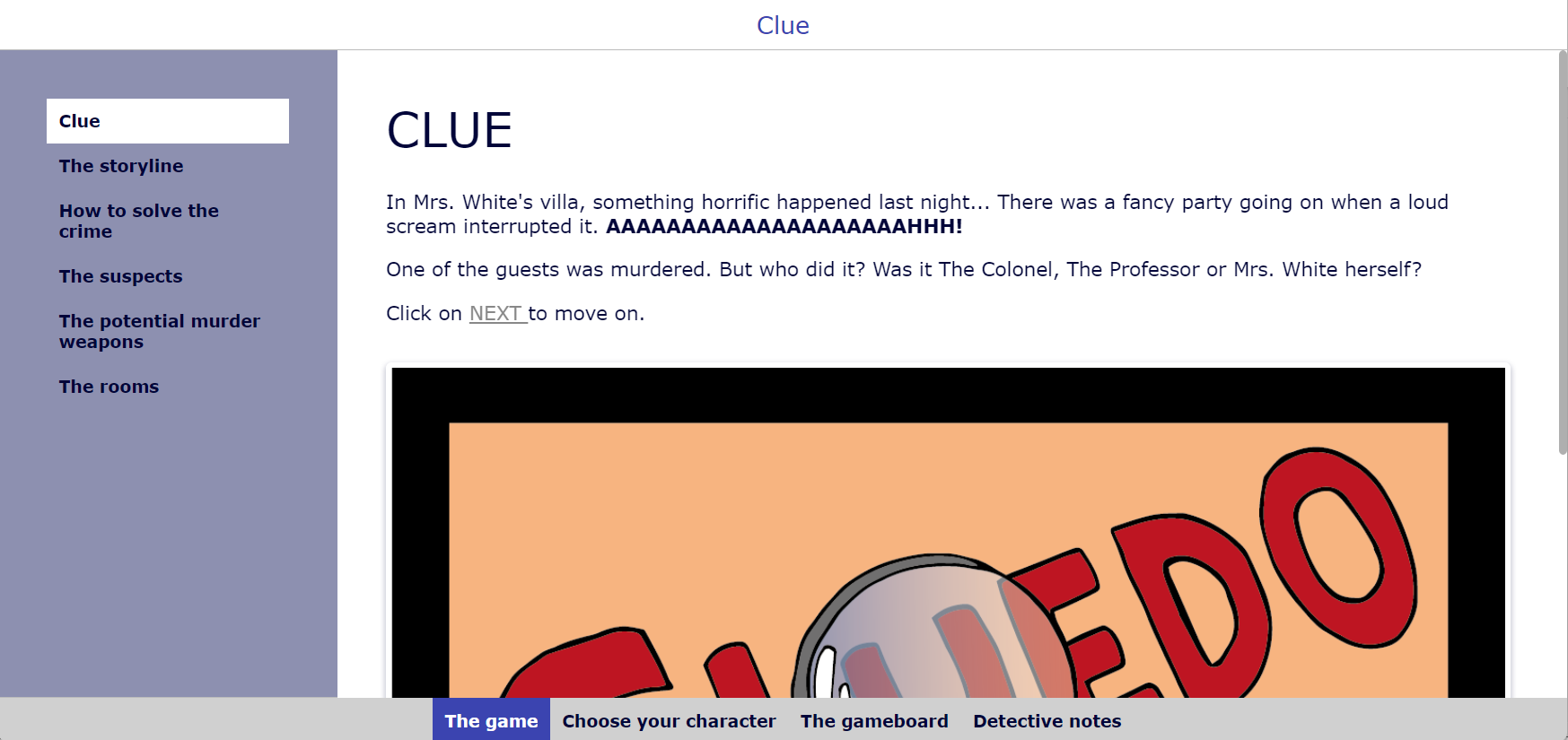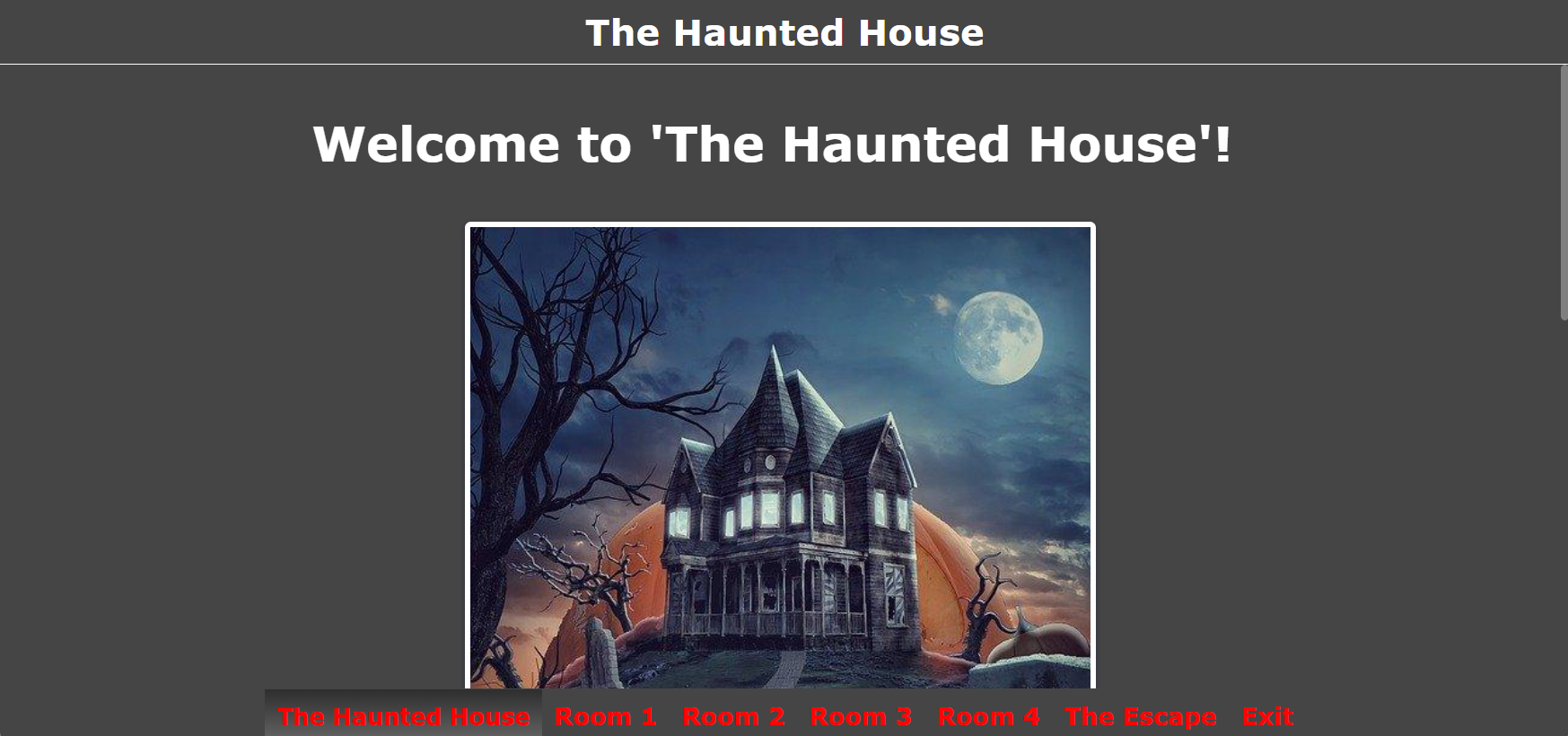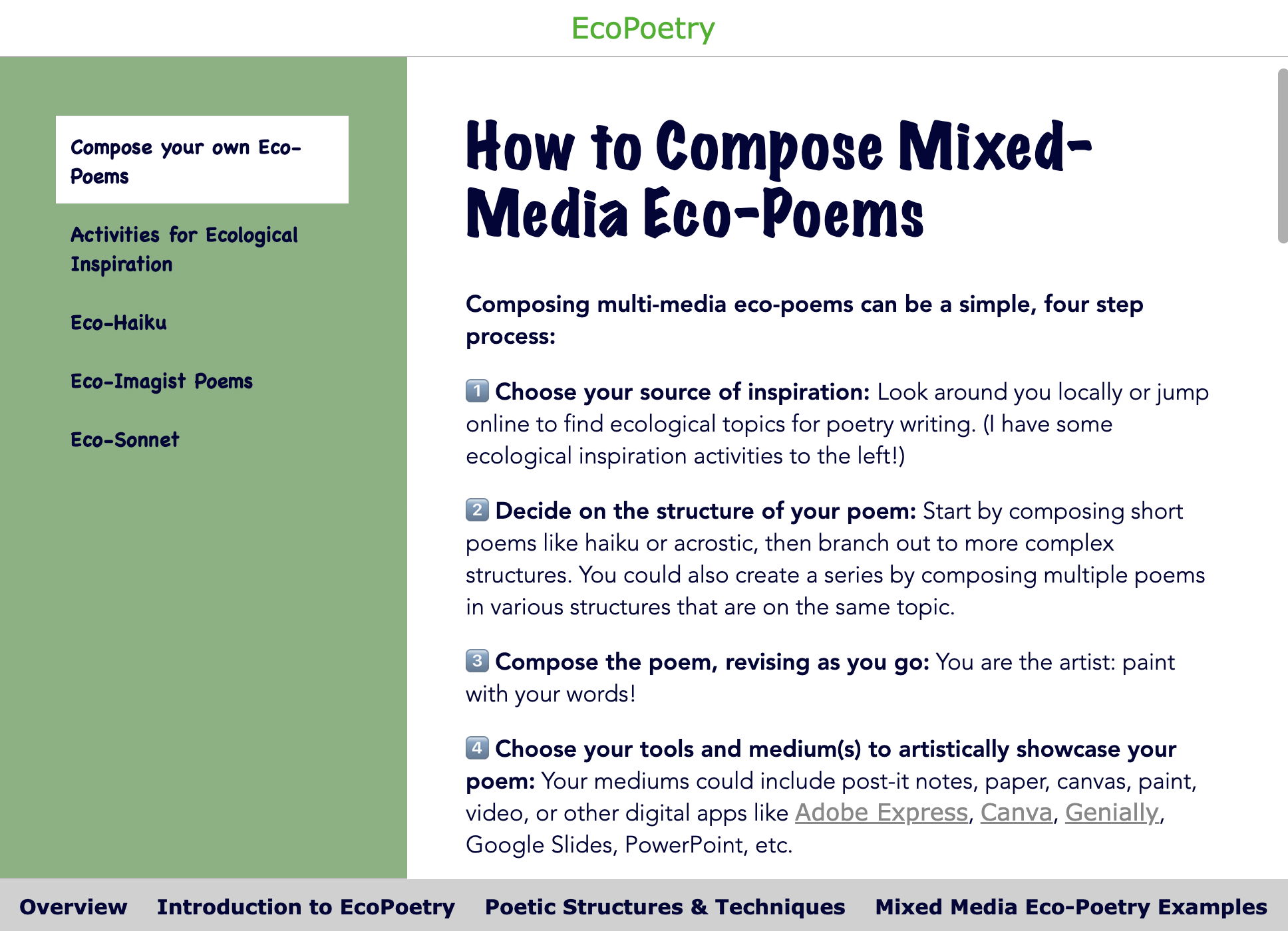10+ Surprising ways to use WebQuests in your classroom
 Lucie Renard —
Lucie Renard —
Using WebQuests in your lessons is always a fun classroom activity! For the students, who get to go on a quest and figure things out independently, and for the teacher, who gets to create them.
Yes, it takes a bit more time to build great WebQuest, but that’s what makes them awesome! And the possibilities are endless! Let me show you the real power of WebQuests in this blog post.
The best WebQuest template
I wouldn’t be writing this if you couldn’t create a WebQuest with BookWidgets. Get your account, and check out this WebQuest tutorial or webinar to create your first WebQuest. Bookwidgets allows you to include other interactive exercises like crossword puzzles, bingo games, and many more. You’ll see the real power of this WebQuest builder right away.
10 WebQuest examples with BookWidgets
1. Classic WebQuest
 A classical WebQuest has always 5 to 6 stages: the introduction, the task, the process, evaluation and a conclusion. In many of the WebQuests, there’s also a tab for other resources and links.
A classical WebQuest has always 5 to 6 stages: the introduction, the task, the process, evaluation and a conclusion. In many of the WebQuests, there’s also a tab for other resources and links.
Take a look at this classic WebQuest example below, made with BookWidgets:
A WebQuest made with BookWidgets is completely adaptable: you can give the stages different names, you can remove some stages, and you can add even more stages if you want.
2. Microlearning with a WebQuest
 Microlearning is about cutting large lessons into small chunks. In this WebQuest example below, I divided the lesson topic and materials into 4 smaller parts. Give your students the right instructions, and let them go through the WebQuest individually or in groups. In this case, students have to work in small groups.
Microlearning is about cutting large lessons into small chunks. In this WebQuest example below, I divided the lesson topic and materials into 4 smaller parts. Give your students the right instructions, and let them go through the WebQuest individually or in groups. In this case, students have to work in small groups.
You can include all the lesson materials your students need. This gives them the possibility to look back at the WebQuest and lesson material anytime they want, and it will engage them to work independently.
3. Self-regulated learning with a WebQuest
 BookWidgets is much more than just a WebQuest builder. It has a library of 40+ interactive exercise templates, of which the WebQuest widget is just one example. This allows you to build out a large project for your students that they can accomplish independently. You can create a consistant lesson structure throughout all your SRL lessons, and add “Game Rules” so students can build and become aware of the SRL competencies they need to self-regulate a lesson.
BookWidgets is much more than just a WebQuest builder. It has a library of 40+ interactive exercise templates, of which the WebQuest widget is just one example. This allows you to build out a large project for your students that they can accomplish independently. You can create a consistant lesson structure throughout all your SRL lessons, and add “Game Rules” so students can build and become aware of the SRL competencies they need to self-regulate a lesson.
Here’s a template you can use for your self-refulated lessons. All you have to do is change the content.
You can also use this approach to create a cross-curricular, self-regulated project. Check out this example.
You can find both SRL blueprints in this BookWidgets folder to duplicate and adapt with your content.
4. Use a WebQuest to differentiate learning
 When you think about differentiation, you think about helping students with different learning levels. When a student is done with an exercise, you have to be able to give them another, more advanced one. When a student is struggling with the lesson material, you should give them easier exercises until they gets the basics.
When you think about differentiation, you think about helping students with different learning levels. When a student is done with an exercise, you have to be able to give them another, more advanced one. When a student is struggling with the lesson material, you should give them easier exercises until they gets the basics.
In short, you need to have an exercise for every level. It’s best to start by deciding how many levels you have. In most cases, you have three levels: beginner, advanced, and specialist. You don’t have to name them: you can represent them with stars or other images too (e.g 1 star, 2 stars and 3 stars).
The 2-star exercises are the most important ones. These are in line with your curriculum objectives. You want your students to be able to make exercises like these.
But not everyone learns at the same pace. Some students understand the lesson material quicker than others. But that doesn’t mean the others won’t get there. They will, they just need more time. So how can you create these three different exercise levels and still let your students choose which one they want to make? That’s easy. Here’s an example of a differentiation WebQuest I made:
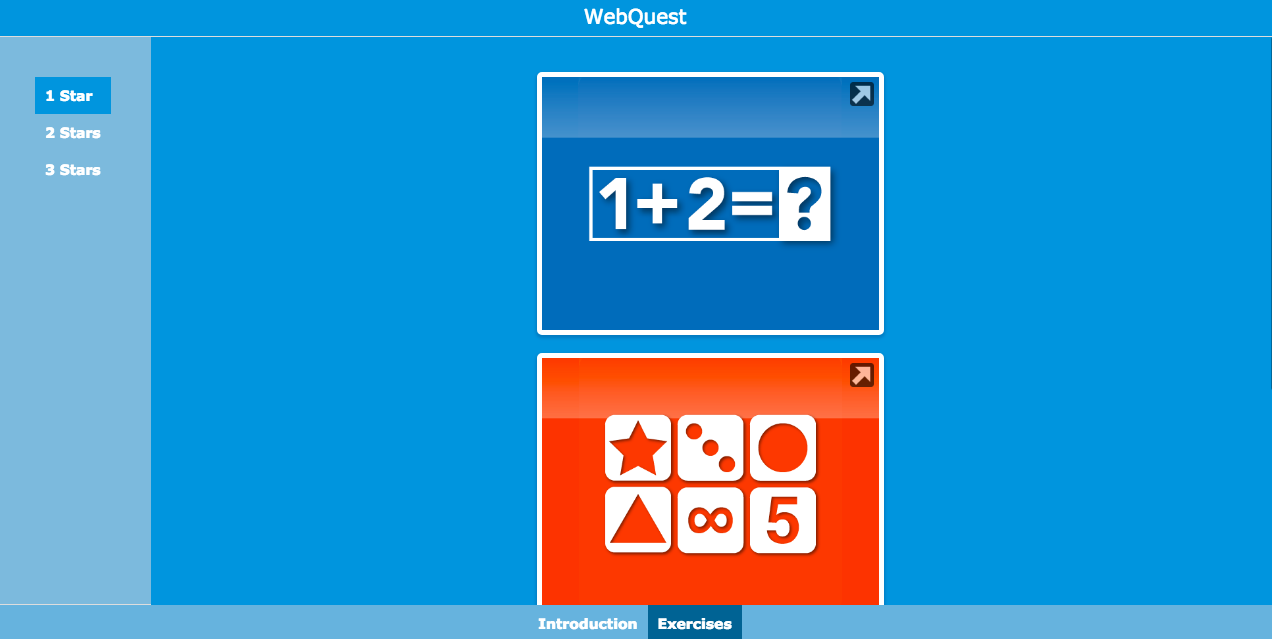
5. A WebQuest instruction bundle
 Now, try to imagine a WebQuest that’s just an instruction bundle.
Now, try to imagine a WebQuest that’s just an instruction bundle.
This WebQuest can be a guide or a content list with all the documents and exercises your students need. You can add instructions and textbook pages where students have to go to, reading tips and books, articles, important links and many more. It’s a gathering place of all your students’ lesson resources.
6. Rehearsal WebQuest
 Students can make good use of regular rehearsal of the lesson material. Not all students will make these optional exercises, but if you offer them, they will only learn more.
Students can make good use of regular rehearsal of the lesson material. Not all students will make these optional exercises, but if you offer them, they will only learn more.
Divide your WebQuest with tabs and sections. A tab can stand for a lesson topic, and a section can stand for particular exercises about that topic. You can choose how you structure your WebQuest. Just make sure students don’t get lost in it.
Students can go to the WebQuest whenever they want to make new rehearsal exercises when learning for a test or exams. The worksheet or quiz widget is suited for that purpose, because it has question types that get automatically graded, so students get instant feedback. You can also add other comments to the questions, so when students don’t know the answer to a question, you can send them to the explanation. This can be another widget, or a page in their textbook.
7. Flipped classroom WebQuest
 Flipping the classroom is a pedagogical education model that reverses the typical elements of lecture and homework. In most cases, students are instructed to view short videos at home, before they come to the class. By doing this, classroom time can be freed up to be spent on discussions, exercises, and projects.
The video lecture may be seen as the key ingredient of the lesson, but it may be any learning material that provides sufficient self-explanation.
Flipping the classroom is a pedagogical education model that reverses the typical elements of lecture and homework. In most cases, students are instructed to view short videos at home, before they come to the class. By doing this, classroom time can be freed up to be spent on discussions, exercises, and projects.
The video lecture may be seen as the key ingredient of the lesson, but it may be any learning material that provides sufficient self-explanation.
Basically, classroom time becomes homework and homework becomes classroom time. Flipping the classroom is very easy to do with a WebQuest. It also encourages the student to be more independent and to learn individually. Take a look at this example of a flipped learning WebQuest. First, your students need to go through some videos about the lesson “social media” at home. There’s a locked tab so students can’t move on yet. That’s the in-class activity - a classroom discussion.
8. WebQuest for brainstorming
 In a WebQuest, you can embed other educational apps and pages. Embed a Padlet board for different topics in a WebQuest solely for brainstorming. You can also just use the BookWidgets Mindmap widget.
In a WebQuest, you can embed other educational apps and pages. Embed a Padlet board for different topics in a WebQuest solely for brainstorming. You can also just use the BookWidgets Mindmap widget.
9. WebQuest as classroom manager
 Because the WebQuest widget is very easy to update, you can even use it as a classroom agenda that students have to look at every day. Put homework on it, or notes to your students’ parents. If you don’t have the budget for a classroom management system, this could be a handy solution. It’s also pretty easy, because students don’t need logins.
Because the WebQuest widget is very easy to update, you can even use it as a classroom agenda that students have to look at every day. Put homework on it, or notes to your students’ parents. If you don’t have the budget for a classroom management system, this could be a handy solution. It’s also pretty easy, because students don’t need logins.
10. WebQuest for storytelling
 Engage your students in the art of storytelling, a Webquest can provide a dynamic learning experience. Whether it’s a short or long story, the goal stays the same: guiding students through a story about a lesson subject with several assignments that encourages them to think and learn.
Engage your students in the art of storytelling, a Webquest can provide a dynamic learning experience. Whether it’s a short or long story, the goal stays the same: guiding students through a story about a lesson subject with several assignments that encourages them to think and learn.
Go check out the WebQuest exampl about “the life of Shakespeare”. 👇
11. WebQuest to complete a digital lesson
 Gone are the days when teachers simply lectured in front of a passive audience. Thanks to the digital era, this traditional teaching approach has evolved. With BookWidgets, you have the ability to create engaging digital lessons using a WebQuest. Below is an example that will give you a better idea of what it could look like.
Gone are the days when teachers simply lectured in front of a passive audience. Thanks to the digital era, this traditional teaching approach has evolved. With BookWidgets, you have the ability to create engaging digital lessons using a WebQuest. Below is an example that will give you a better idea of what it could look like.
12. Clue game WebQuest
 A WebQuest can also be used in a playful and fun way, such as a cleu game. It is up to the students to unravel the riddle. A purchase of the game is no longer necessary, as it can all be done digitally. Below is an example, but of course you can put something else together yourself. Not sure how? This blog post explains how to create a Clue game step by step. You can use these mystery WebQuests to encourage problem-solving skills and comprehensive reading.
A WebQuest can also be used in a playful and fun way, such as a cleu game. It is up to the students to unravel the riddle. A purchase of the game is no longer necessary, as it can all be done digitally. Below is an example, but of course you can put something else together yourself. Not sure how? This blog post explains how to create a Clue game step by step. You can use these mystery WebQuests to encourage problem-solving skills and comprehensive reading.
13. WebQuest as an escape the classroom
 An escape room is a fun activity, have you already tried it out? You can even create an escape room to use in your classroom and trust me, the students will love it. The theme and assignments can be completely determined by you. Maybe it’s a fun and educational idea to incorporate recent learning topics? In this example they don’t need to escape the classroom, but a Haunted House. 👻
An escape room is a fun activity, have you already tried it out? You can even create an escape room to use in your classroom and trust me, the students will love it. The theme and assignments can be completely determined by you. Maybe it’s a fun and educational idea to incorporate recent learning topics? In this example they don’t need to escape the classroom, but a Haunted House. 👻
The outstanding question now remains, perhaps: How to create an escape the classroom game? Check out this blog post and find out! 👏
14. WebQuest for Project Based Learning
 A WebQuest can also be used to guide students through the process of project based learning. You can curate resources and embed activities for students to learn new concepts and document their creative process. In this example, students learn about the literary genre of ecopoetry and create their own ecopoems. Check out this blog post to learn more about ecopoetry and climate change education. 🌿
A WebQuest can also be used to guide students through the process of project based learning. You can curate resources and embed activities for students to learn new concepts and document their creative process. In this example, students learn about the literary genre of ecopoetry and create their own ecopoems. Check out this blog post to learn more about ecopoetry and climate change education. 🌿
Wrap up
So that’s it! Got any new interactive learning ideas? Or maybe you have another idea to use a WebQuest in your lessons. Let us know on Twitter or in the Teaching with BookWidgets Facebook group.
Say hi 👋 to me on LinkedIn. I’m looking forward to hearing from you!
Create your first WebQuest right here:

